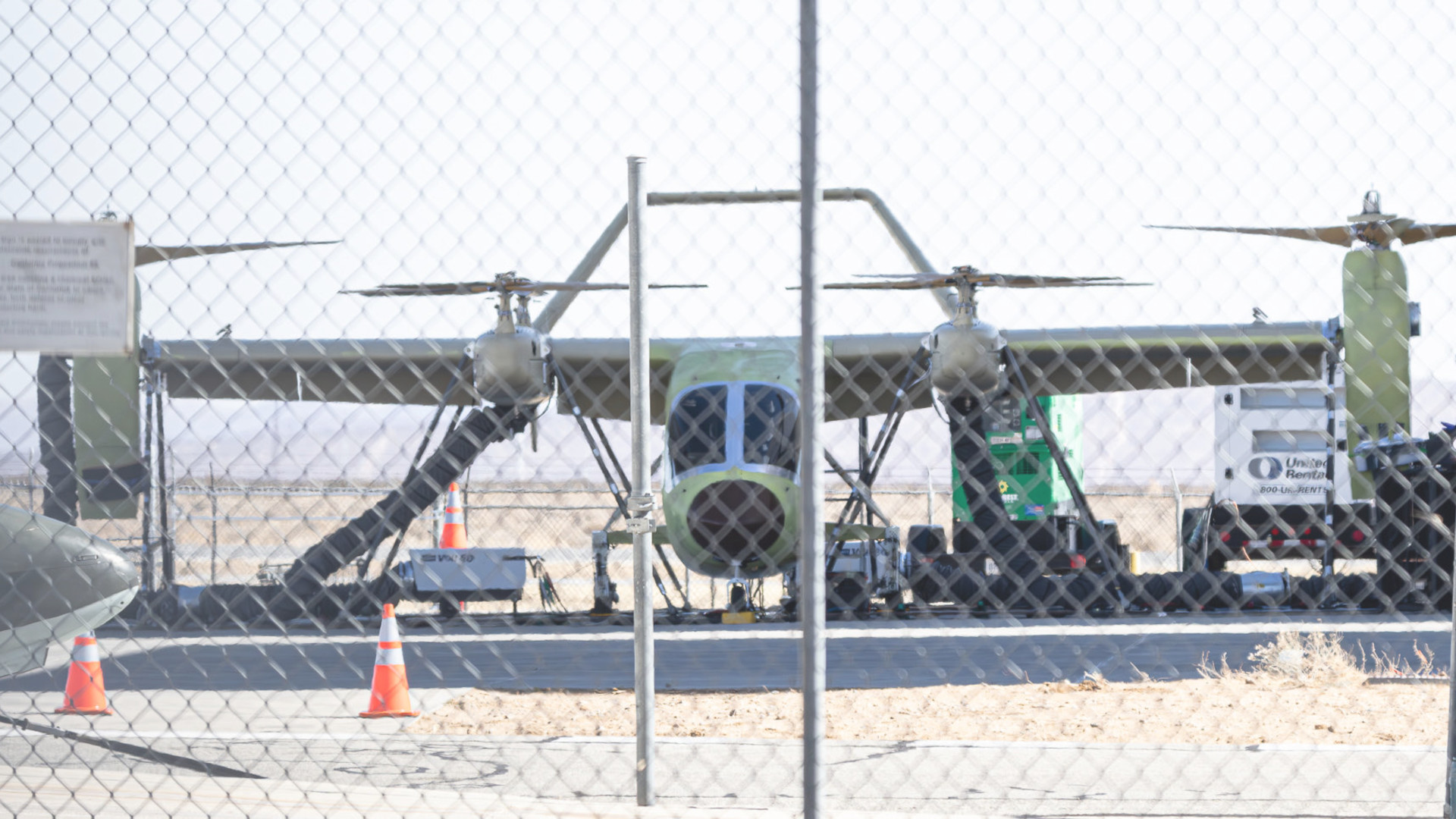What looks to be a previously unseen vertical takeoff and landing (VTOL) capable aircraft design, with a mix of tilting and fixed rotors, has emerged at the Mojave Air & Space Port in California. Mojave is a hotbed for aviation development where testing of new and often intriguing designs, including VTOL types, regularly occurs.
Photographer Matt Hartman took the pictures seen above and below of the unusual aircraft at Mojave yesterday and posted them on social media. The aircraft was sitting outside a hangar on the eastern side of the main apron area, according to Hartman. Several aviation companies have a permanent presence at Mojave, and the U.S. military also makes use of its facilities.
No identifying markings are readily visible on the aircraft and it is unpainted in its primer coating. It is also physically anchored to the ground and hoses are seen snaking down from the nacelles holding the rotors, all of which is common to see during ground testing of VTOL designs.
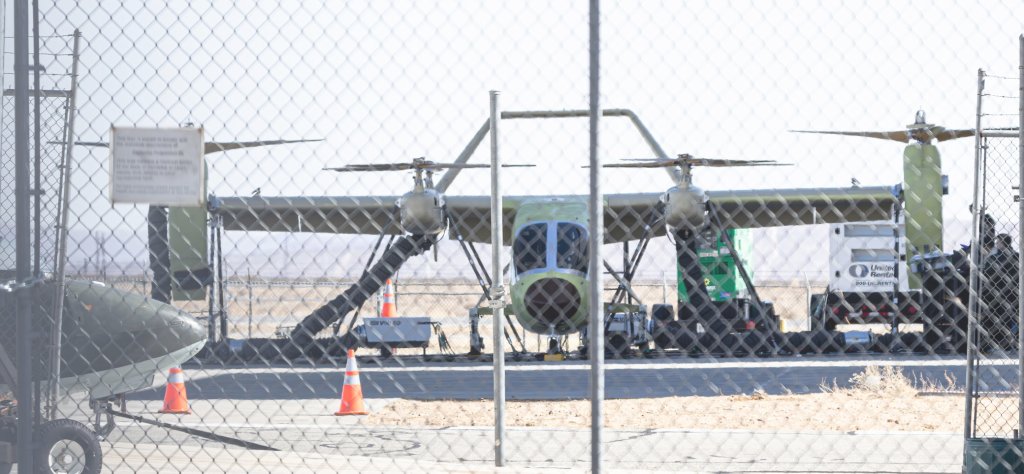
From what can otherwise be seen in Hartman’s pictures, the design has six rotor assemblies. There are two larger ones in tilting nacelle pods at the wingtips and two pairs of smaller ones that appear to be fixed vertically in nacelles built into the high-mounted wing. A single, horizontal trapezoidal tail points to a twin-boom tail configuration that is also visible.
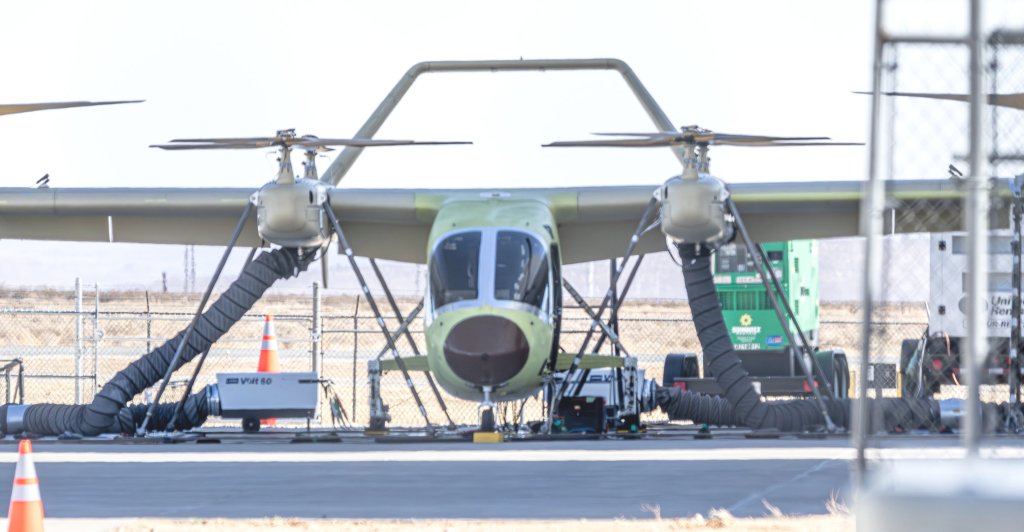
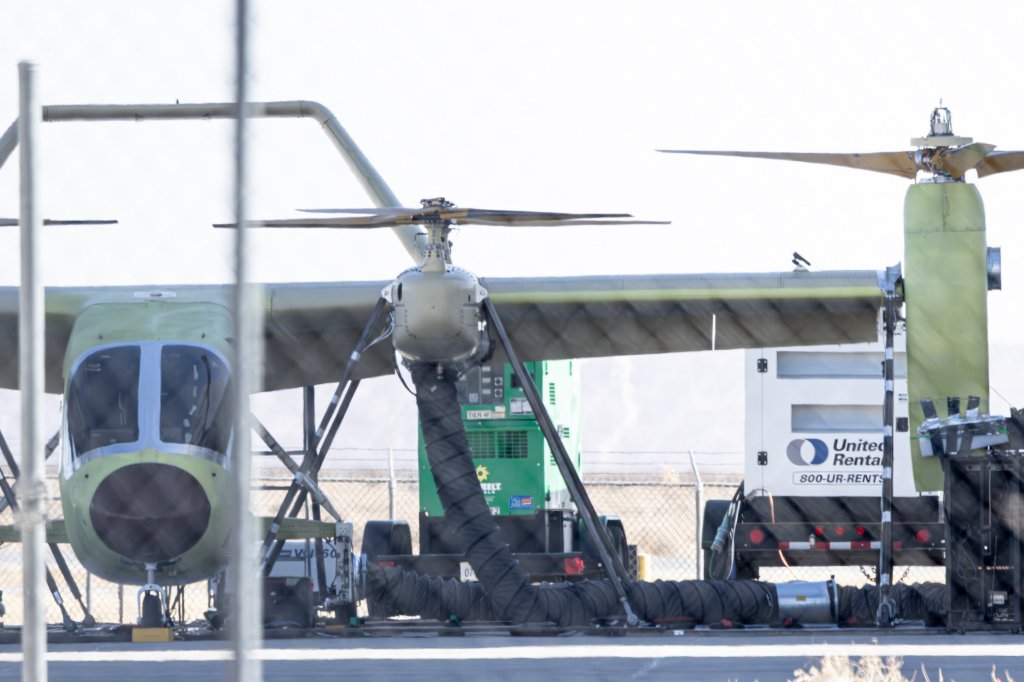
There is a central fuselage with a front windscreen with two distinct halves, pointing to side-by-side seating, at least for individuals up front. A large doorway is also seen on the left side of the forward fuselage. A tricycle landing gear arrangement consisting of a nose wheel and two main wheels attached to struts sticking out from the sides of the rear of the fuselage is visible, as well. In some very broad respects, it almost looks like a mashup of the OV-10 Bronco light attack and observation aircraft and the V-22 Osprey tilt-rotor.
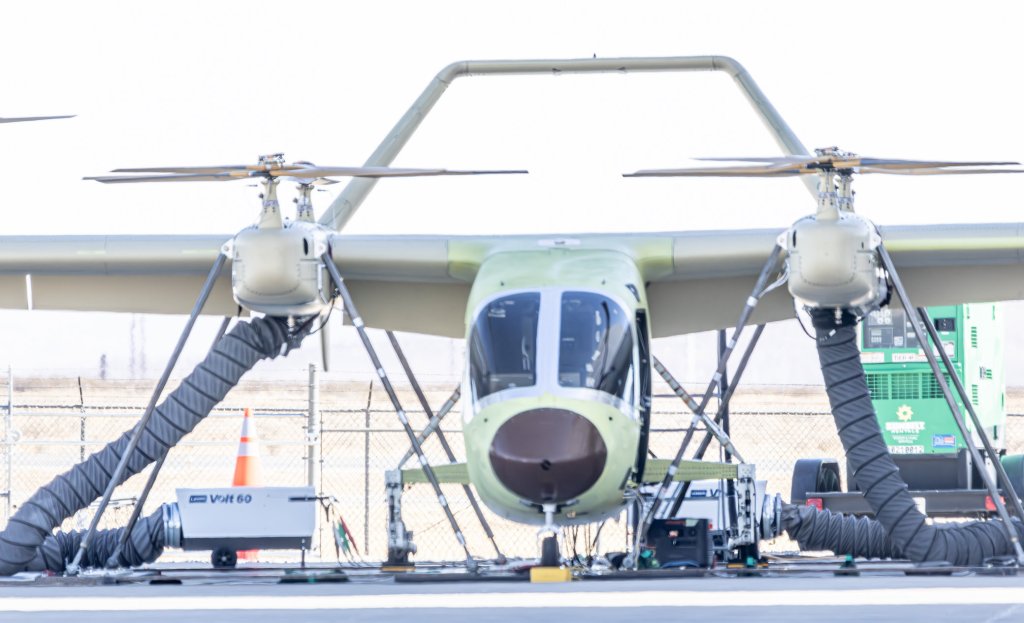
Though what kind of propulsion system the design might have is unknown, the wingtip nacelle pods at least have exhausts pointing to turbine engines, which could drive the rotors directly or produce electricity to run electric motors that drive these rotors. They could also drive the wing rotor via mechanical linkages or by providing electronic power to their motors. Additional turbines might also be present in the wing nacelles to provide power to those rotors, either mechanically or electrically, but they would have to be small and this seems less likely to be the case. A hybrid-electric design where turbines provide electricity to at least some of the rotors would be a particularly big deal as this is still an emerging technology space, especially for the U.S. military, if it is involved with this design at all.
The market space for hybrid and electric VTOL designs, crewed and uncrewed, and intended for civilian and/or military use, has exploded in recent years in the United States and globally. In April 2024, the independent Vertical Flight Society said its database of distinct electric VTOL, or eVTOL, concepts had hit 1,000 entries. Many such designs have been tested at Mojave.
The Air Force’s Agility Prime program, which began in 2020, is perhaps the best-known example of recent U.S. military efforts in this space. Run through AFWERX, the service’s internal technology incubator, Agility Prime has been experimenting with a variety of eVTOL designs, including types from Beta Technologies, Joby Aviation, and LIFT Aircraft. In December, Aviation Week reported that persistent range limitations with existing eVTOL designs had prompted Agility Prime to refocus its efforts on hybrid-electric types.

For the U.S. military, interest in new VTOL aircraft designs, including the active development of types with more traditional propulsion arrangements, is being driven in part by a desire for greater runway independence amid concerns about the growing vulnerability of air bases, as well as other established facilities, during a future high-end conflict. This, in turn, has led to the development of new concepts of operations focused heavily on expeditionary and distributed operations, including in remote and austere sites with limited existing infrastructure. New VTOL designs, especially uncrewed ones, are also increasingly viewed as important components of future supply chains for forces in forward areas, including right on the front lines. Casualty evacuation and the extraction of downed pilots, including from behind enemy lines, have also been presented as potential roles for such aircraft.
There is also considerable civilian interest in hybrid-powered and eVTOL designs, including from commercial operators eyeing them for use as air taxis.
While we don’t know if the aircraft that has now emerged at Mojave is intended for civilian or military use, or both, it does appear to be quite elaborate overall. Larger tilt-rotor designs also remain rare among civilian-focused general mobility concepts.
TWZ will be keeping an eye out for more information about this VTOL aircraft and what its projected roles might be.
Contact the author: joe@twz.com
